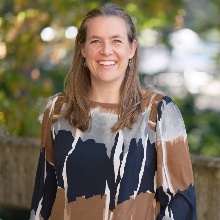Contact
Bandtäle 2
70569 Stuttgart
Germany
Room: 1.032
2024
- 17.Haluska, A. A., Röhler, K., Fabregat-Palau, J., Alexandrino, D. A. M., Abramov, S., Thompson, K. J., Straub, D., Kleindienst, S., Bugsel, B., Zweigle, J., Zwiener, C., & Grathwohl, P. (2024). Complementary Field and Laboratory Batch Studies to Quantify Generation Rates of Perfluoroalkyl Acids in a Contaminated Agricultural Topsoil with Unknown Precursors (No. 3). 44, Article 3. https://doi.org/10.1111/gwmr.12680
- 16.Langarica-Fuentes, A., Straub, D., Wimmer, B., Thompson, K., Nahnsen, S., Huhn, C., & Kleindienst, S. (2024). Subtle microbial community changes despite rapid glyphosate degradation in microcosms with four German agricultural soils. Applied soil ecology, 198, Article June. https://doi.org/10.1016/j.apsoil.2024.105381
- 15.Vogel, A. L., Thompson, K. J., Straub, D., Musat, F., Gutierrez, T., & Kleindienst, S. (2024). Genetic redundancy in the naphthalene - degradation pathway of Cycloclasticus pugetii strain PS-1 enables response to varying substrate concentrations. FEMS microbiology ecology, 100, Article 6. https://doi.org/10.1093/femsec/fiae060
2023
- 14.Vogel, A. L., Thompson, K. J., Kleindienst, S., & Zarfl, C. (2023). Dosage concentration and pulsing frequency affect the degradation efficiency in simulated bacterial polycyclic aromatic hydrocarbon-degrading cultures. Environmental science and pollution research, 30, 59813–59825. https://doi.org/10.1007/s11356-023-26546-9
- 13.Vogel, A. L., Thompson, K. J., App, C. B., Gutierrez, T., Löffler, F. E., & Kleindienst, S. (2023). Substrate-independent expression of key functional genes in Cycloclasticus pugetii strain PS-1 limits their use as markers for PAH biodegradation. Frontiers in microbiology, 14. https://doi.org/10.3389/fmicb.2023.1185619
- 12.Bronner, R., Thompson, K., Dreher, C., Runge, E., Voggenreiter, E., Shuster, J., Wan, B., Joshi, P., Fischer, S., Duda, J.-P., Kappler, A., & Mansor, M. (2023). Corrigendum to” Co-reduction of Fe (III) and S0 drives Fe-S biomineral formation and phosphate mobilisation” by Bronner et al., 2023. Geochemical Perspectives Letters, 27, 8. https://doi.org/10.7185/geochemlet.2301cor
- 11.Bronner, R., Thompson, K., Dreher, C., Runge, E., Voggenreiter, E., Shuster, J., Wan, B., Joshi, P., Fischer, S., Duda, J.-P., Kappler, A., & Mansor, M. (2023). Co-reduction of Fe(III) and S0 drives Fe-S biomineral formation and phosphate mobilisation. Geochemical Perspectives Letters, 24, 27–32. https://doi.org/10.7185/geochemlet.2301
2020
- 10.Bray, M. S., Wu, J., Padilla, C. C., Stewart, F. J., Fowle, D. A., Henny, C., Simister, R. L., Thompson, K. J., Crowe, S. A., & Glass, J. B. (2020). Phylogenetic and structural diversity of aromatically dense pili from environmental metagenomes. Environmental Microbiology Reports. https://doi.org/10.1111/1758-2229.12809
- 9.Thompson, K. J. (2020). Phototrophic iron oxidation and implications for biogeochemical cycling in the Archean Eon. https://doi.org/10.14288/1.0392002
2019
- 8.Thompson, K. J., Kenward, P. A., Bauer, K. W., Warchola, T., Gauger, T., Martinez, R., Simister, R. L., Michiels, C. C., Llirós, M., Reinhard, C. T., Kappler, A., Konhauser, K. O., & Crowe, S. A. (2019). Photoferrotrophy, deposition of banded iron formations, and methane production in Archean oceans. Science Advances, 5, Article 11. https://doi.org/10.1126/sciadv.aav2869
- 7.Ozaki, K., Thompson, K. J., Simister, R. L., Crowe, S. A., & Reinhard, C. T. (2019). Anoxygenic photosynthesis and the delayed oxygenation of Earth’s atmosphere. Nature Communications, 10, Article 1. https://doi.org/10.1038/s41467-019-10872-z
2018
- 6.Stamps, B. W., Nunn, H. S., Petryshyn, V. A., Oremland, R. S., Miller, L. G., Rosen, M. R., Bauer, K. W., Thompson, K. J., Tookmanian, E. M., Waldeck, A. R., Loyd, S. J., Johnson, H. A., Stevenson, B. S., Berelson, W. M., Corsetti, F. A., & Spear, J. R. (2018). Metabolic capability and phylogenetic diversity of Mono Lake during a bloom of the eukaryotic phototroph Picocystis sp. strain ML. Applied and Environmental Microbiology, 84, Article 21. https://doi.org/10.1128/AEM.01171-18
2017
- 5.Thompson, K. J., Simister, R. L., Hahn, A. S., Hallam, S. J., & Crowe, S. A. (2017). Nutrient acquisition and the metabolic potential of photoferrotrophic Chlorobi. Frontiers in Microbiology, 8, 1212. https://doi.org/10.3389/fmicb.2017.01212
- 4.Crowe, S. A., Hahn, A. S., Morgan-Lang, C., Thompson, K. J., Simister, R. L., Llirós, M., Hirst, M., & Hallam, S. J. (2017). Draft Genome Sequence of the Pelagic Photoferrotroph Chlorobium phaeoferrooxidans. Genome Announcements, 5, Article 13. https://doi.org/10.1128/genomea.01584-16
2015
- 3.Thompson, K. J., Zong, J., & Mackie, G. A. (2015). Altering the divalent metal ion preference of RNase E. Journal of Bacteriology, 197, Article 3. https://doi.org/10.1128/jb.02372-14
2013
- 2.Wong, A. G., McBurney, K. L., Thompson, K. J., Stickney, L. M., & Mackie, G. A. (2013). S1 and KH domains of polynucleotide phosphorylase determine the efficiency of RNA binding and autoregulation. Journal of Bacteriology, 195, Article 9. https://doi.org/10.1128/jb.00062-13
- 1.Melendez, I., Grice, K., Trinajstic, K., Ladjavardi, M., Greenwood, P., & Thompson, K. (2013). Biomarkers reveal the role of photic zone euxinia in exceptional fossil preservation: An organic geochemical perspective. Geology, 41, Article 2. https://doi.org/10.1130/G33492.1
Ongoing research into the detrimental effects of anthropogenic activities, specifically the use of herbicides in agricultural practices, have delineated the persistence and ubiquity of both herbicides and their degradation by-products in nature. Further work is needed to elucidate the impact of these herbicides, for example widely used glyphosate, and their degradation on the micro- and macro-communities. My research will utilize a multi-facetted approach with both molecular-biological tools, such as ‘omics’, and geochemistry to investigate the factors that control or limit glyphosate degradation under laboratory conditions designed to better reflect those of the environment. These data will subsequently be used to better inform and untangle the complexity of microbial community interactions in environmental studies of herbicide biodegradation and thus pollutant turnover.


